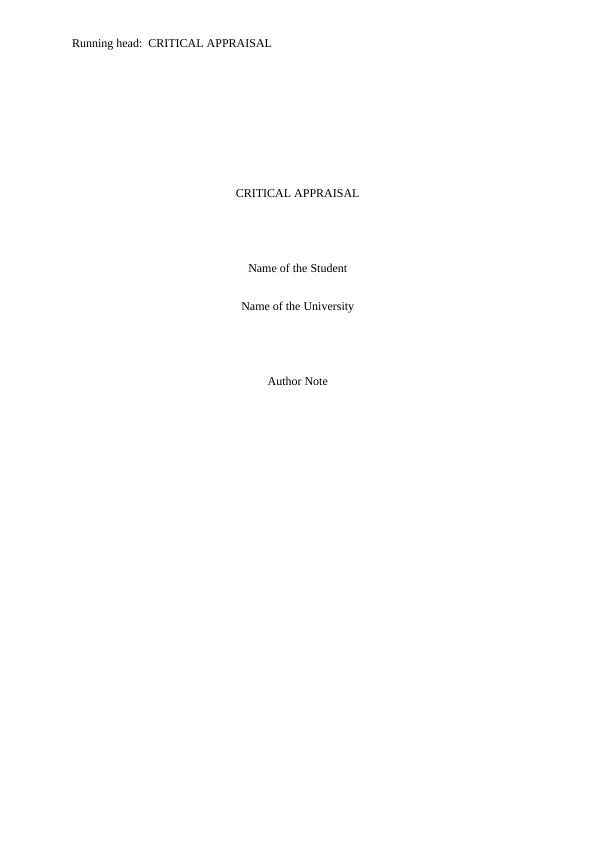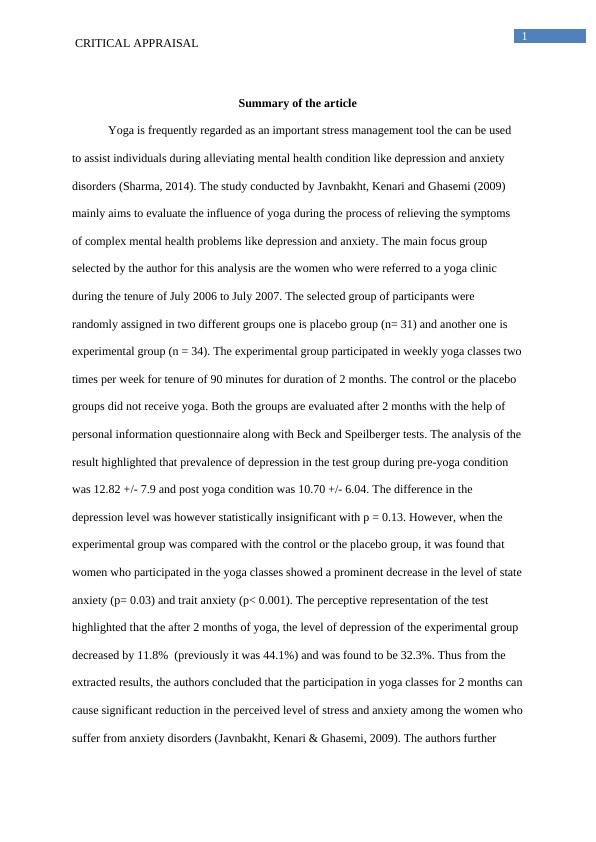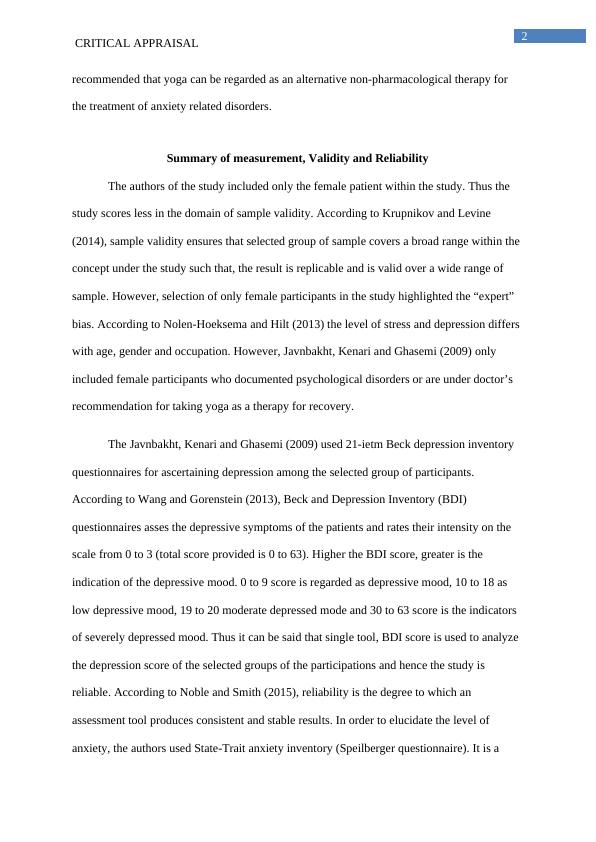Critical Appraisal of a Study on the Effects of Yoga on Depression and Anxiety in Women
Critical appraisal of an article on the effects of yoga on depression and anxiety in women
8 Pages2164 Words387 Views
Added on 2023-06-03
About This Document
This critical appraisal analyzes a study on the effects of yoga on depression and anxiety in women. The study found that yoga can significantly reduce the perceived level of stress and anxiety among women who suffer from anxiety disorders. The article discusses the summary of the study, measurement validity and reliability, internal and external validity, and recommendations to overcome the threats of internal and external validity.
Critical Appraisal of a Study on the Effects of Yoga on Depression and Anxiety in Women
Critical appraisal of an article on the effects of yoga on depression and anxiety in women
Added on 2023-06-03
ShareRelated Documents
End of preview
Want to access all the pages? Upload your documents or become a member.
Critical Appraisal of the Impact of Yoga on Depression and Anxiety in Women
|10
|2278
|72
Yoga as a Potential Treatment for Anxiety and Depression: A Study
|2
|604
|495
Effectiveness of Yoga in Managing Anxiety and Depression in Women
|8
|2229
|1
Yoga on Anxiety and Depression Article 2022
|4
|602
|6
Anxiety and Depression Case Study 2022
|4
|624
|29
The Effect of Yoga on Stress, Anxiety, and Depression in Women - Article Summary
|5
|654
|426



